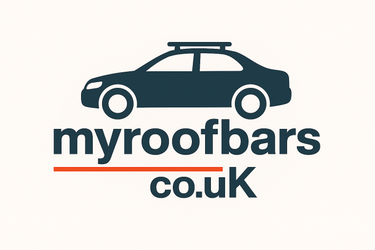on orders over £40
How to Prevent Roof Bar Rust, Damage & Wear Over Time
Roof bars are built to take a beating — from heavy gear and long motorway miles to the British weather. But even the toughest bars will degrade over time if not looked after properly.
Here’s how to keep your roof bars rust-free, safe, and looking smart year-round.
🌧️ The Main Threats to Your Roof Bars
Roof bars are constantly exposed to:
-
Rain and road spray (salt in winter is especially corrosive)
-
UV rays which can fade paint or plastic coatings
-
Heavy loads causing bending or warping over time
-
Poor storage or neglect between trips
Without maintenance, this all adds up to:
-
Rust forming on metal bars
-
Rubber feet cracking
-
Loose fittings
-
Rattling, vibration and noise on the road
🧼 1. Clean Your Roof Bars Regularly
After every trip — especially winter or muddy conditions — do a quick clean:
✅ What to Use:
-
Warm water and car shampoo
-
Microfibre cloth (avoid harsh scrubbing pads)
-
Old toothbrush for rubber pads and crevices
🔗 Car Care & Cleaning Products
❌ Avoid:
-
Strong solvents or abrasive chemicals
-
Jet washing too close (can damage seals or coatings)
🧴 2. Apply a Protective Coating
Just like your car’s paint, roof bars benefit from a protective finish.
🛡 Recommended:
-
Use a rubber-safe trim restorer on foot packs and end caps
-
Apply a light metal sealant or wax to aluminium or steel bars
-
Consider a ceramic coating if you leave them on all year
📌 Tip: Wipe off any standing water after rain to stop corrosion setting in.
🔧 3. Check Fixings & Rubber Components
Over time, exposure can weaken the roof bar’s fittings and rubber pads.
| Part | What to Check |
|---|---|
| Rubber feet | Cracks, hardening, loss of grip |
| Screws/bolts | Rust, looseness |
| Locks | Corrosion, sticking mechanisms |
| Bar channels | Debris, water traps |
🔗 Roof Bar Accessories & Spares
Replacements are inexpensive — and far cheaper than new bars!
🧳 4. Store Them Right When Not in Use
Leaving your bars on permanently? It’s fine short-term, but long-term exposure invites trouble.
🚫 Bad Storage:
-
Tossed in the shed under garden tools
-
Leaned against a wall
-
Left outdoors in winter
✅ Good Storage:
-
Inside their original box or a padded bag
-
Flat on a shelf or hung using wall hooks
-
Dry, temperature-stable space like a loft or garage
📌 Don’t forget to label your foot packs or vehicle-specific kits!
🔧 5. Re-Tighten After Trips
Vibration from long journeys can loosen even well-fitted bars.
Always:
-
Re-tighten bars after your first 30–60 mins of driving
-
Recheck all clamps before reusing after storage
-
Inspect key-lock systems for wear
❌ Common Mistakes to Avoid
| Mistake | Why It’s a Problem |
|---|---|
| Leaving bars on all year | Increases UV and water exposure |
| Never cleaning after winter | Road salt = rust in no time |
| Forgetting re-tightening | Bars can shift and become unsafe |
| Using harsh cleaners | Can strip paint or coatings |
